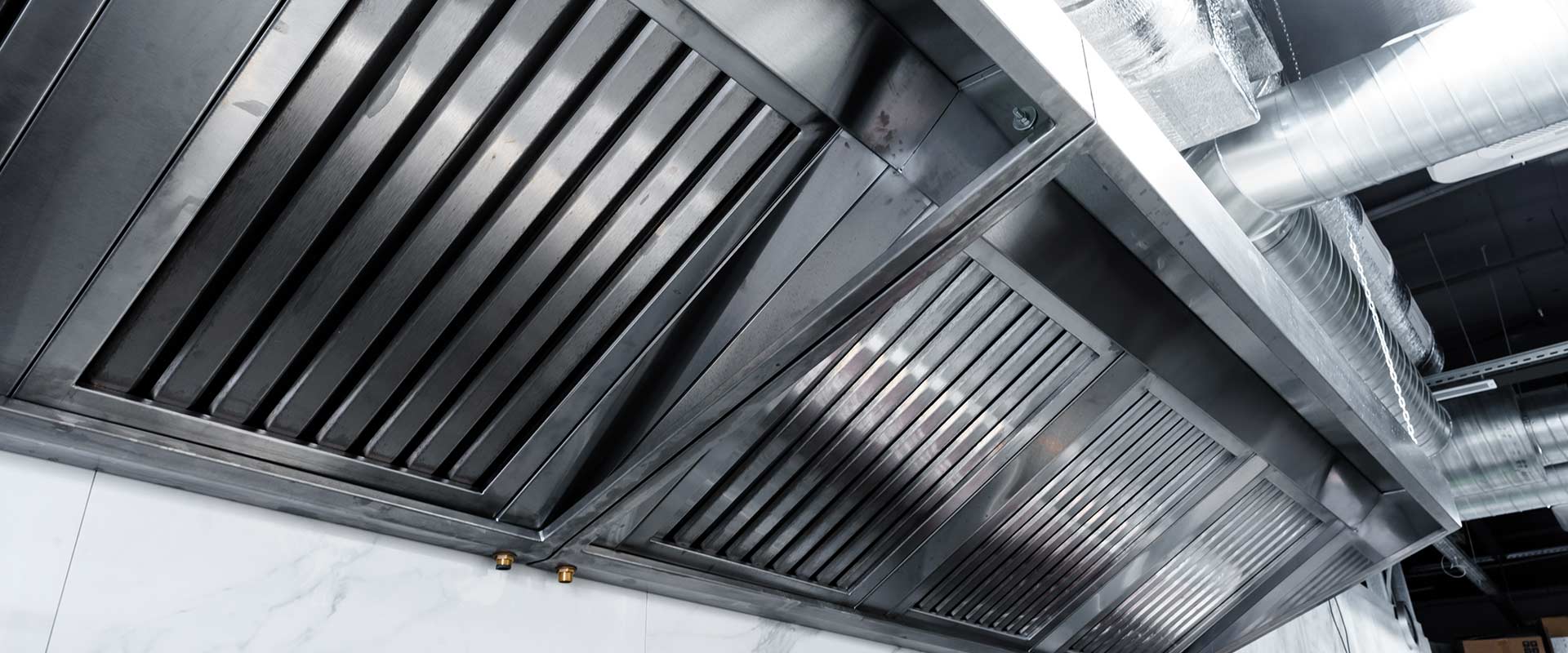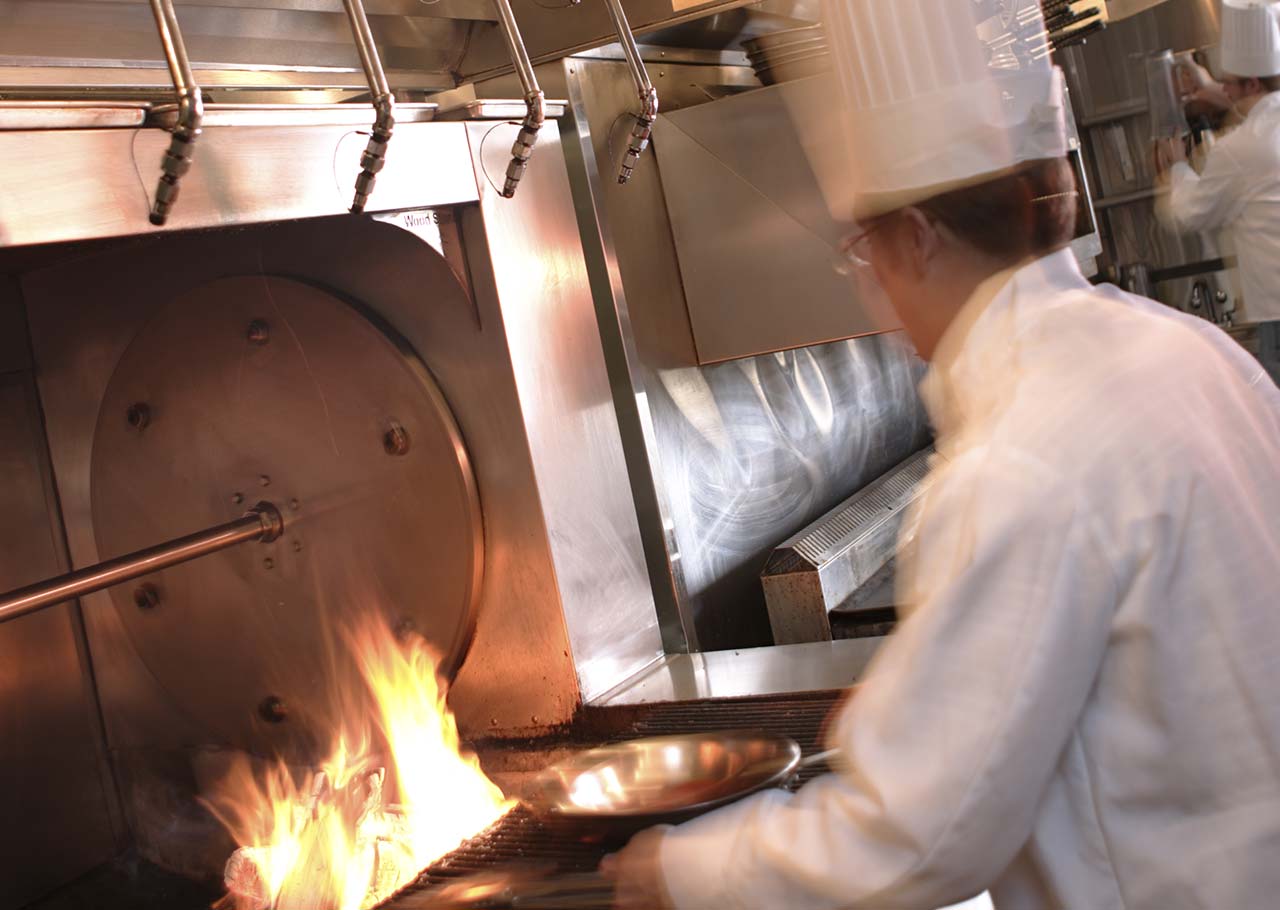Fire safety is essential in any cooking area, especially when dealing with high heat, open flames, or grease. Whether it’s a professional-grade range in a commercial kitchen or a busy institutional food service operation, one of the most effective safeguards against fire is a kitchen hood fire suppression system.
These systems are purpose-built to detect and suppress fires where they’re most likely to start on or around cooking appliances. While they’re found mostly in commercial kitchens, their design and function make them a critical component of any environment where large-scale cooking is performed.

What Is a Kitchen Hood Fire Suppression System?
A kitchen hood fire suppression system is a specialized fire protection system installed within the exhaust hood and ductwork above cooking equipment. Its primary job is to detect a fire and extinguish it within seconds of ignition.
These systems go beyond standard sprinkler systems or fire extinguishers, as they don’t rely on water. Instead, they use a chemical agent formulated to tackle high-temperature grease fires common in modern commercial kitchens. The result is a fast, targeted response that minimizes damage while helping your team stay safe.
How Do Kitchen Hood Fire Suppression Systems Work?
The design of a kitchen hood fire suppression system allows it to operate quickly and automatically, minimizing the time between fire detection and fire suppression. Here’s how the system functions:
- Heat Detection
Sensors or fusible links are placed in the hood system above the cooking equipment. When a fire occurs, the heat causes these elements to activate the suppression system.
- Chemical Discharge
A wet chemical agent is released through nozzles directly above the cooking area. This agent is designed to smother flames, cool hot surfaces, and create a soapy layer over burning grease to prevent re-ignition.
- Appliance Shut-Off
To ensure the fire doesn’t reignite, the system will automatically shut down the gas or electrical supply to the cooking appliances when activated.
- Manual Pull Station
While automatic detection is the first line of defense, the system also includes a manual pull station that staff can use to activate the system in case of emergency.

Why are Kitchen Hood Suppressions Systems Important?
Kitchen hood fire suppression systems are not just a safety enhancement—they’re a required standard in many settings. Commercial kitchens are the most common environment where these systems are installed, due to the volume and intensity of cooking operations. But their value applies broadly:
- Prevention of Fire Spread
These systems catch and control fires early, before they can move into the ductwork or spread to other parts of the building.
- Specialized Grease Fire Control
Grease fires can’t be extinguished with water. The wet chemical agents used in these systems are formulated to suppress high-temperature oil fires effectively and safely.
- Compliance and Inspection
In most jurisdictions, codes like NFPA 96 and UL 300 require suppression systems in any commercial or institutional kitchen with active cooking appliances. Regular inspections and certifications are also required.
- Operational Continuity
By suppressing fires quickly and minimizing damage, these systems help kitchens get back up and running faster after an incident.

Common Applications for Kitchen Hood Suppression Systems
While they’re essential for commercial kitchens, kitchen hood fire suppression systems are also found in a variety of other environments where food preparation occurs at scale:
- Institutional kitchens (e.g., schools, hospitals, correctional facilities)
- Catering commissaries and food production centers
- Supermarket hot food areas
- Food trucks and mobile kitchens
- Culinary schools and training facilities
In all these settings, fire suppression systems help ensure both safety and code compliance.
Key Components of a Modern Kitchen Hood Suppression Systems
A properly installed kitchen hood fire suppression system includes several important features:
- UL 300 Certification: Ensures the system meets modern fire testing standards for commercial cooking equipment.
- Wet Chemical Agent: Designed for grease fires, forming a vapor-sealing blanket to prevent flare-ups.
- Automatic and Manual Activation: For fast response whether triggered by heat or staff.
- Fuel Shut-Off Mechanism: Cuts off gas or electricity to cooking equipment during activation.
- Customizable Nozzle Layout: Positioned to protect each cooking appliance effectively.
Maintenance of a Kitchen Suppression System

Having a fire suppression system in place is only effective if it’s well maintained. Industry standards and local regulations typically require professional inspection every six months. During an inspection, technicians will:
- Check chemical tank pressure and expiration dates
- Test detection mechanisms and manual pull stations
- Verify proper nozzle alignment and condition
- Ensure shut-off mechanisms function correctly
In addition to inspections, routine cleaning of hoods and filters is essential. Grease buildup can hinder the system’s ability to function properly in an emergency.

Peace of Mind and Practical Protection
A kitchen hood fire suppression system offers peace of mind in knowing there’s a system in place that can react within seconds of a fire. This gives staff the confidence to focus on their work, and business owners the reassurance that they’re protecting their people and property. Whether you’re managing a high-volume commercial kitchen or simply preparing food in a professional environment, a suppression system is one of the smartest investments you can make in safety and operational resilience.
Fires in cooking environments can escalate quickly, but with a kitchen hood fire suppression system in place, the risk can be drastically reduced. These systems are designed with one purpose: to stop fires before they cause serious harm. For any facility where cooking plays a role, especially commercial kitchens, they are not just helpful, they’re essential.
For more on protecting commercial kitchens, check out Hiller’s Guide to Restaurant Hood Systems.
